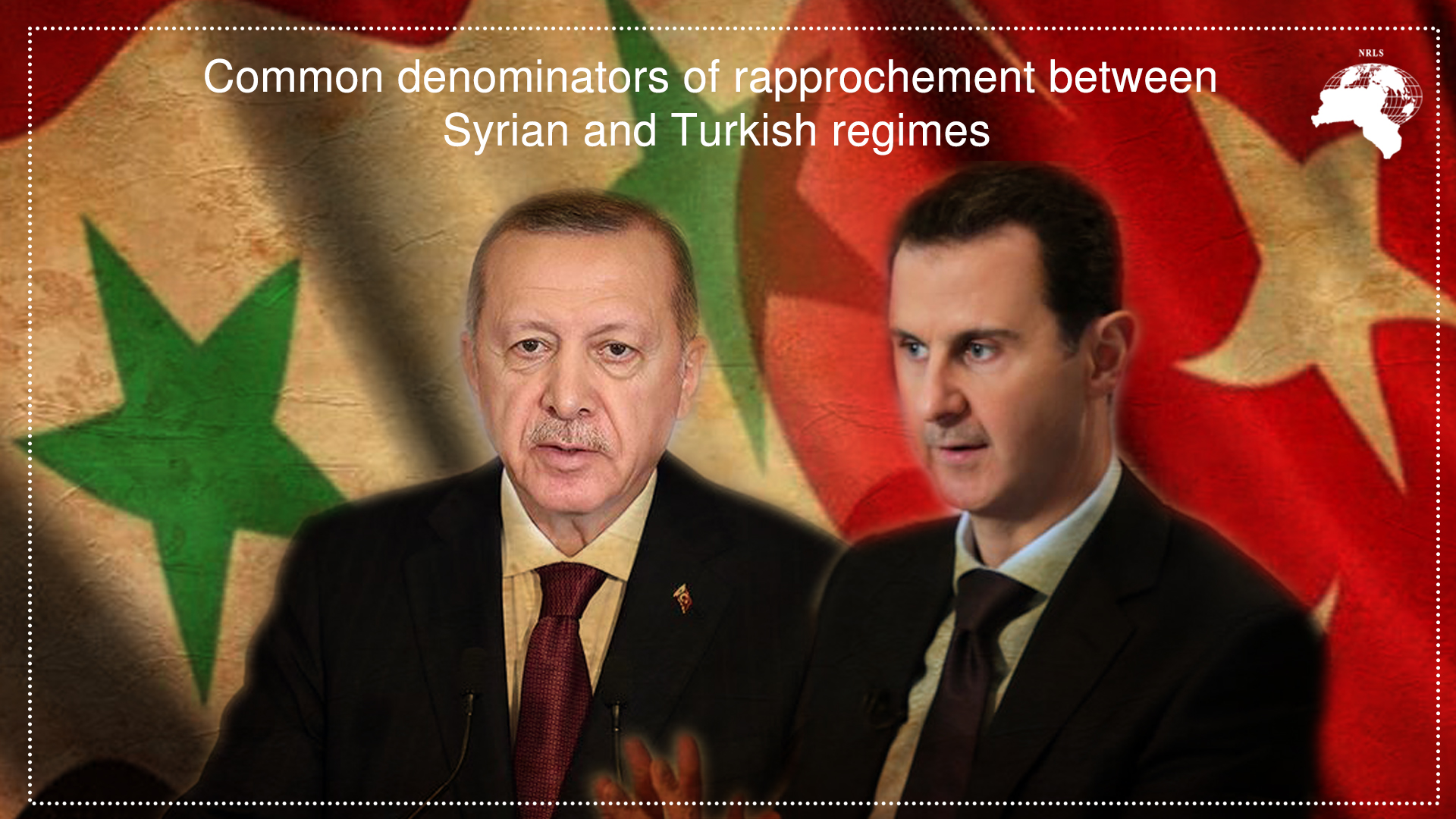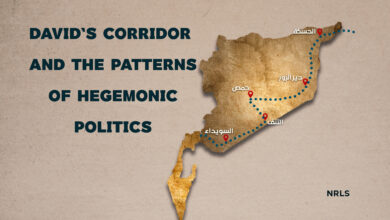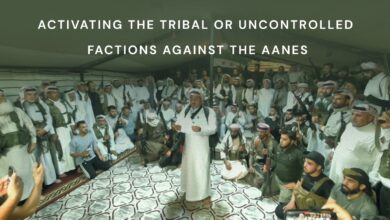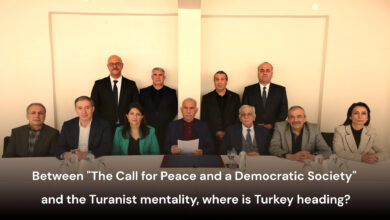Common denominators of rapprochement between Syrian and Turkish regimes
Common denominators of rapprochement between Syrian and Turkish regimes

The Syrian-Turkish rapprochement ten years after the latter’s blatant interference in the Syrian crisis and its occupation of large parts of northern Syria, has become the focus of attention of the media and strategic centers in recent times. After the Turkish regime reached a dead end regarding its colonial ambitions in northern Syria and its inability to get the green light from Russia and the US to occupy new parts of the areas of the Autonomous Administration of North and East Syria (AANES), especially Kobani, Manbij and Tel Rifaat, it seemed to be in great trouble with the approaching date of the presidential elections. Among the files that have become a dilemma for it are:
- The Syrian refugees: Turkey invested the Syrian refugees in blackmailing European countries and obtaining large financial aid, which used to finance its military operations in Syria, Libya and Azerbaijan. However, this file has become a concern for the Turkish regime as a result of the popular rejection of the presence of the Syrian refugees and their impact on their economy. So, with the presidential elections approaching, Erdogan fears losing many votes.
- Erdogan failed to send the Syrian refugees to the settlements his government established in northern Syria, especially in Afrin, as part of the process of demographic change. Many refugees have refused to live in those settlements for security, economic and social reasons.
- Erdogan’s inability to carry out his aggression against the areas of Kobani, Manbij and Tel Rifaat may affect the polarization of the votes of “racist” Turkish nationalists in the presidential elections.
- The failure of Erdogan’s economic policy which led to the deterioration of the Turkish lira.
As for the Syrian regime, it is living in an economic, social and political dilemma, perhaps the most prominent of which are:
- The Russian-Ukrainian war and the ongoing protests in Iran have affected the funding sources of the Syrian regime which led to the deterioration of the Syrian pound. One US dollar has reached 7.000 Syrian pounds (SYP) in a short period of time, after it was between 3.400 and 3.500 SYP three months ago.
- The outbreak of protests in Suwayda and Daraa, southern Syria, as a result of the bad economic and security conditions. There are concerns of the outbreak of protests in other areas such as the Syrian coast.
- The political isolation experienced by the Syrian regime.
- The inability of the Syrian regime to liberate the occupied Syrian north which has reached a dead end.
Erdogan’s failure to overthrow Bashar al-Assad and establish a Muslim Brotherhood regime loyal to him, the failure of his terrorist organization – ISIS – to occupy the AANES areas, the US continued military support for the Syrian Democratic Forces (SDF) which has made the region more secure and stable, made Erdogan turn towards the Syrian regime in a new step that he can achieve what he couldn’t. Despite the many obstacles that prevent the rapprochement with the Syrian regime such as the Turkish complete withdrawal from northern Syria and the handing over of the file of the terrorist organizations or the Turkish-backed opposition Syrian National Coalition (SNC), in addition to handing over the crossings to the regime, the current political, economic and military conditions have created common denominators between the two regimes that may help bring about a rapprochement between them:
- Turkey’s refusal to withdraw from northern Syria as a prerequisite by the regime for rapprochement does not mean reaching a dead end. However, they may set a timetable for the withdrawal when the Turkish goals towards the AANES are achieved. As a first stage, the Turkish regime may withdraw from the north of the M4 Highway “Saraqib-Ariha-Jisr al-Shughur” and hand over some crossings for the return of commercial activity, which may positively affect the Syrian and Turkish economies.
- The intransigence of the Syrian regime and its chauvinistic policy towards the SDF and the AANES in recognizing their economic, social and military rights, is consistent with the Turkish goals to strike the area, especially in light of the economic, security and military successes the AANES has achieved compared to the areas held by the regime and the Turkish occupation state. Both the Syrian and Turkish regimes are afraid of these successes and are trying in various ways to distort the image of the AANES and to strengthen their cooperation against it.
- Turkey, Russia and the Syrian regime seek to get rid of the factions or even the political figures that pose a threat to the regime and reject any rapprochement between the Turkish and Syrian regimes. Those factions have become an obstacle for Erdogan to carry out his new policy, so it is necessary to get rid of them by handing over their files to the Syrian regime. In return, the regime must support Turkey against the SDF. Therefore, we find that the military and political leaders of the Syrian opposition are rushing to justify the new Turkish policy as serving the interests of the Syrian people for fear of handing them over to the Syrian regime.
- The Turkish and Syrian regimes reject the presence of the US and international forces, partners of the SDF, in the fight against terrorism in the east of the Euphrates River. They also demand that the US withdraw from Syria.
- The UN Security Council (UNSC) Resolution 2254 regarding the resolving of the Syrian crisis by supporting a transitional political process within six months. All attempts by the guarantor states – Russia, Turkey and Iran – aim to circumvent the Res. 2254 through the Astana and Sochi meetings. The West, especially the US, insists on implementing this resolution as a basic solution that brings the Syrian crisis to an end. The UNSC Res. 2254 has become a nightmare for Erdogan, so it is in his interest now to empty this decision of its content through rapprochement with the regime and normalization with it.
- The regime rejects the work of the Constitutional Committee and it continues to put obstacles for its work. It is now in the interest of the Turkish regime to cancel the meetings of the Constitutional Committee and preserve the current constitution of Syria, since there are demands from some countries to include the Syrian Democratic Council (SDC) in the meetings of the Constitutional Committee, which may mean a blow to the Turkish goals in striking the AANES.
Russia is the biggest winner from this rapprochement, as it increases the gap between Turkey and the US which rejects any rapprochement or normalization with the regime, and limits the solution of the Syrian crisis to the three guarantor states – Russia, Iran and Turkey. The Turkish regime is the second winner because it will work to exploit this rapprochement as an electoral card for Erdogan to win a new term. It will also work with the regime, Iran and Russia to fight the AANES and to achieve its colonial ambitions. As for the regime, it sees this rapprochement as an opportunity to preserve the pillars of its governance, mitigate the consequences of the Caesar Act, and the beginning of normalization.
On the other hand, the US will be the biggest loser since this rapprochement is sponsored by Russia and does not serve its policy in the region. It deepens the gap with its ally Turkey, and makes the latter closer to Russia than it is. Also, the armed factions that reject any rapprochement with the Syrian regime will be losers. The statements of the Turkish officials that they will not abandon them remain statements to buy time, as happened with the Muslim Brotherhood in Turkey when the Turkish regime began to approach Egypt. So, the truth is that normalization with the Assad regime is a stab in the back for them and the Syrian people. The Syrian opposition must lower its expectations of Erdogan’s positions and take a lesson from his previous experience with Cairo and how he changed his tone towards the Egyptian opposition in Turkey.
The AANES and the SDF will continue resisting and defending their democratic project in the face of the Turkish ambitions. They constitute an obstacle to the ambitions of Russia, Turkey and the regime in Syria. The rapprochement between the Turkish and Syrian regimes is a threat to the Syrian people and the AANES. Therefore, the rapprochement between the two regimes will make the Syrian crisis enter a new phase that will increase its complexity and be full of strife and fighting. The intra-Syrian dialogue, especially between the forces opposing this rapprochement, remains the ideal solution to face the conspiracies being hatched by the guarantor states against Syria and the Syrian people. Regarding this issue, the SDC launched an initiative to bring together the views of the Syrian opposition regarding the solution to the Syrian crisis and the talks and rapprochement that are taking place between the two regimes at the present time.




